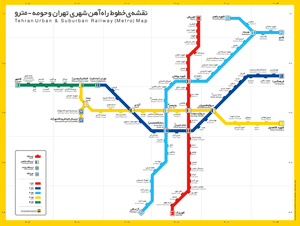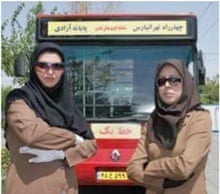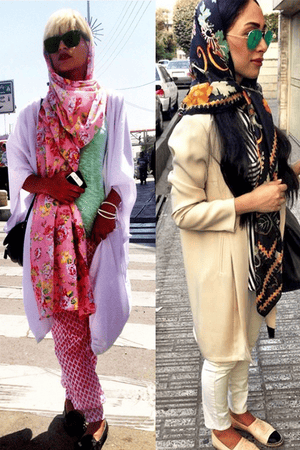By Mona Chalabi, The Guardian, June 30, 2014
 |
| Photo: Abedin Taherkenareh |
To the outside world, Iran has been overtaken by images of its leaders on podiums. As a city, Tehran has become synonymous with the political language of those men. If you want to get past the hyperbole, data speaks volumes.
Five rail lines
In 1999, line 5, the first of the Tehran metro system was opened to the public. Since then, it's been joined by four others (lines 1, 2, 3 and 4) and the carriages that travel along its air conditioned tunnels are considered the cleanest in the world.
The metro carries nearly 2 million passengers each day, representing about 12% of the trips made in the city. That might seem low given the convenience of such a well-planned network that's attracted investment interest from China.
Rail transport prices may seem low (you can compare them above) but for a city that has a large number of unskilled workers and where one in five live below the poverty line, it's still an expensive mode of transport. Especially so when bus trips can cost as little as 1p. The accessibility of buses has also had other consequences – the city's large number of female bus drivers.
1.6 people per room
To get a better reading of the city's heartbeat though, you need to listen to the 13 doctors who checked it on behalf of the World Health Organisation. They went into five (of the city's 22) districts to collect data on 42 different indicators – one of which was the number of people per room in a household.
On average, excluding kitchens, bathrooms and storage rooms, there were 1.6 people per room in each of the city's homes. That might not be surprising given that the city has about 12 million inhabitants packed into 1,500 km squared. Swelling at a rate of 1.3% each year, the south and east of the city remain the most dense, while newer parts still have a lower population density.
75% of Tehranis have a freezer, 55% have a personal computer
In some parts of the city, almost one in two households don't have a freezer while in others (presumably the more prosperous areas) that figure drops to one in 10. There are similarly big gaps in personal computer ownership which averages out at 55% of households. Outside of the capital, those figures plummet. According to the statistical centre of Tehran, 33.4% of households have a computer.
Fashion capital
For some women, the Islamic dress codes in Iran pose no obstacle to expression and innovation in fashion. The Tehran Times, a creation of Araz Fazaeli, has developed a mass following – over 13,000 on Instagram and 18,000 on Facebook. It showcases a more vibrant side of the city.
It isn't the only blog in town either. From the Azad art gallery to the Guardian's very own Tehran Bureau there are a lot of people who have something to say online.
Cost of living
Prices may have soared under sanctions but the city is still relatively cheap. In 2011, the Economist Intelligence Unit ranked Tehran the fourth cheapest city out of 134 that they looked at. According to Expatistan, a collaborative database that crowdsources prices, the typical monthly rent for a furnished, fancy 85 metres squared piece of accommodation will cost around 41.3m Iranian rial (£1,000).
Below are some other prices that indicate how much a typical year in the city might cost.
An anxious city
6.5% of people in the city suffer from somatisation (anxiety) which would be the explanation some residents may give for the city's bad habits. On average 16% of men (and 1% of women) smoke and residents eat an average of 2,400 calories – 36% of people are overweight in the city.
Living four years longer
Despite that, residents of the capital have a life expectancy of 77 years, ahead of the Iranian average of 73. Think there must be something in the water? There is: 2.5% of households had "undesirable results" when microbiological tests were conducted on their tap water.
What data would you like to find out about Tehran? Which city would you like to see in numbers? Share your statistics and your suggestions below.
And if you enjoy finding numbers so much that you do it for a living, why not contribute to this Cities in Numbers series? Write to us at cities@theguardian.com outlining your experience and ideas.





No comments:
Post a Comment